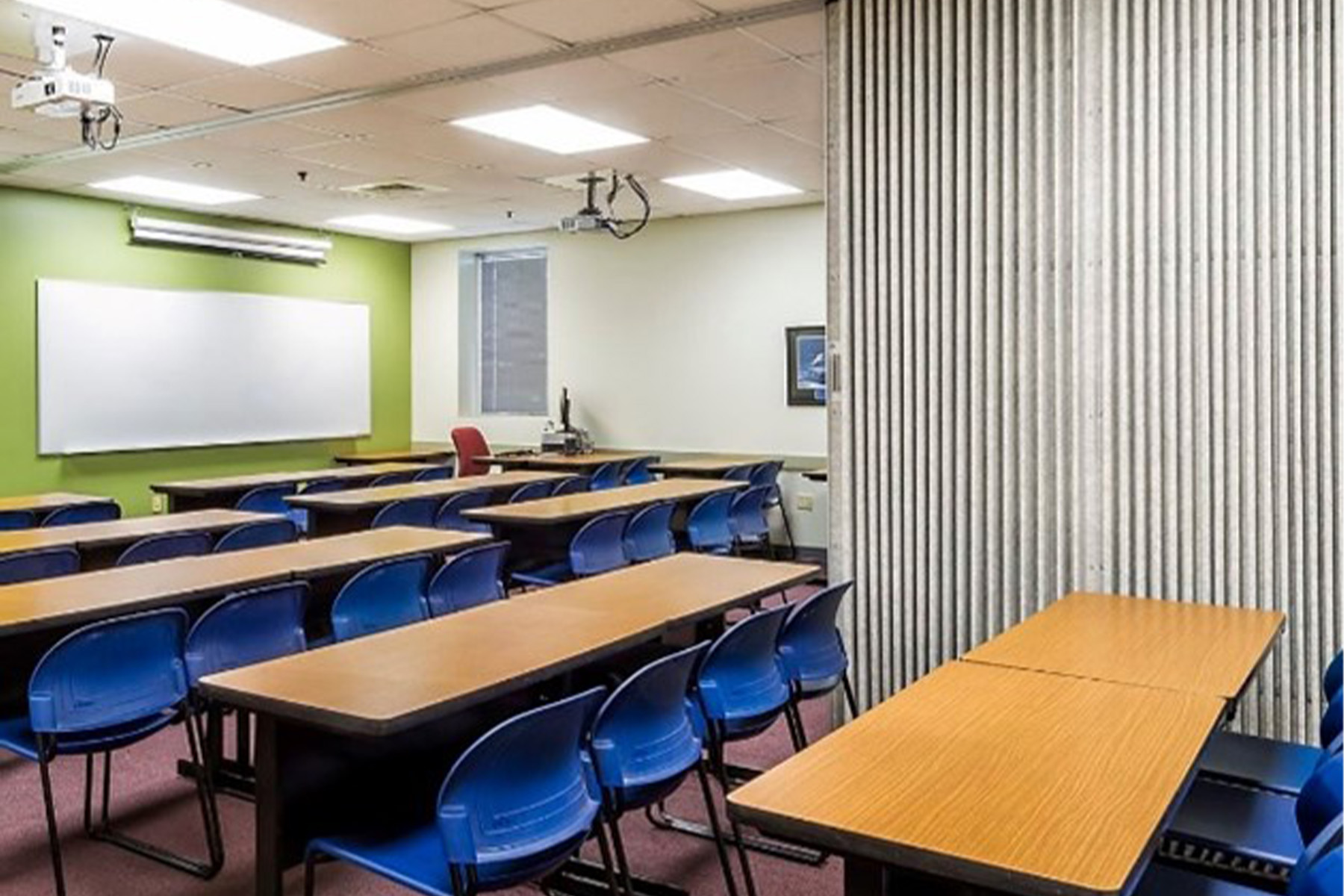
Lost in space: Open-plan classrooms can leave children adrift

Middle years primary-school students are at risk of academic delay when learning in an open-plan classroom
Published 9 August 2023
We all know that talking and listening in large, noisy spaces (like restaurants, shopping centres or concert venues) is tough. Trying to piece together snippets of conversation with background noise is frustrating, exhausting and a definite barrier to communication.
Hearing and understanding speech in background noise is especially difficult for children under 10 years whose auditory systems are still developing and who don’t yet have the language skills to ‘fill-the-gaps’ when they only hear part of what’s said.

Why then, do we so often force children to learn in what is potentially the most hostile of school listening environments – the open-plan classroom?
A 40 year ‘experiment’
Open-plan classrooms – where two or more classes are located in one physical space – have been in vogue in Australia (and worldwide) for around 40 years and are considered conducive to a broad range of teaching practices.

However, teachers and student have consistently identified high levels of noise and lack of acoustic privacy (created by large numbers of students doing multiple activities) as undesirable aspects of these settings.
Between 2016 and 2019, we carried out a study looking at academic progress in open versus enclosed classrooms.
Our initial objective was to explore how students with hearing difficulties – temporary or permanent hearing loss or auditory processing deficits – were coping in these challenging learning spaces.
What we instead found was that all primary-school students in our study group of 7-10 year olds are at risk of academic delay in an open-plan setting.
Our study was supported by the Department of Education’s Victorian Deaf Education Institute and involved data collection by Master of Clinical Audiology students in metropolitan and regional Primary Schools around Victoria.

Open versus closed
We investigated the effect of classroom architecture on academic progress in 196 students in Grades Three and Four, comparing their rate of reading development in open-plan and enclosed-plan classrooms.
All learning conditions (including class groups, teaching personnel and curriculum) were constant throughout the study, while the classroom was changed term-by-term from open to enclosed-plan using a portable, sound-treated wall.
We measured the noise levels at each school in each configuration and found background noise levels were significantly higher, by around 5.4 decibels, in open-plan classrooms.

Education
Is EQ more important than ever?
In normally developing school-aged children a noise-level increase of this magnitude represents a decline in speech understanding of around 10 to 15 per cent.
This suggests that students would need a much higher degree of listening effort to follow what is being said in the open-plan classroom.
We also measured various cognitive abilities (non-verbal IQ, memory, reading fluency, speech perception and attention) in each of the students to investigate why some children might be more affected by the classroom environment than others.
Hard to hear, hard to read
Our findings, published in the Nature Partner Journal: Science of Learning, show that simply closing the acoustic partition resulted in a doubling of the rate of reading fluency development across the whole study cohort.
Reading fluency is the number of words that a student can confidently and accurately read within a given time period.

For the school terms when the wall was in place (creating two enclosed classrooms), the mean fluency increase was 14.0 words per minute, whereas the mean increase with no wall in place (open-plan) was only 7.2 words per minute.
Importantly, not all students were adversely affected by the open-plan environment and there was no relationship between the non-verbal IQ and working memory of the participants and their academic progress through the two classroom conditions.
However, children with poorest speech perception in noise and or weakest attention skills were highly impacted during the open-plan study phases.

These results highlight the potential challenges posed by open-plan learning.
Firstly, increased noise levels make classroom speech understanding more challenging. This, in turn, diverts cognitive resources (which are finite) away from academic learning.
For children with low speech perception, the cognitive load is even higher. This results in greater academic impacts in the noisy, open-plan classroom.
Secondly, those students who are least able to achieve and maintain attention are likely to be the most challenged by the many distractions (both auditory and visual) created by having a second class group in the same physical space.
And this means the risk that these children will become disengaged from classroom activity is higher in the open-plan environment.
What’s next for classroom architecture?
There are signs that the days of super-sized open spaces may be numbered.

The Victorian Department of Education is considering the implications of our study and the New South Wales (NSW) Department of Education has already decided to end construction of new open-plan classrooms.
In a recent letter to the NSW Teachers Federation, the department stated that “current and future new and upgraded school projects will not include the construction of open-plan classrooms that cannot function as an individual space for a single class group”.
So we may be on the cusp of a new era in school classroom design.
Hopefully one that will optimise learning flexibility while minimising acoustic (and visual) distraction to ensure that vulnerable students remain engaged and don’t end up lost in space.
Banner: Alamy
